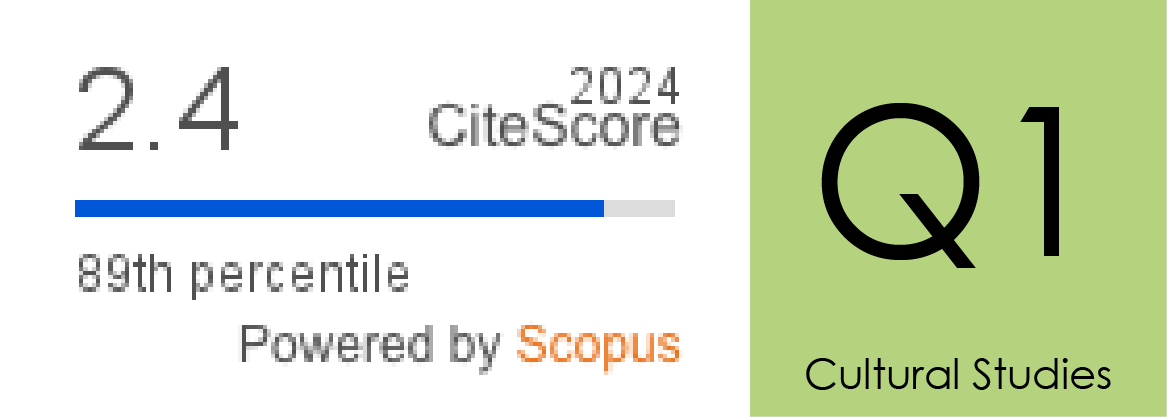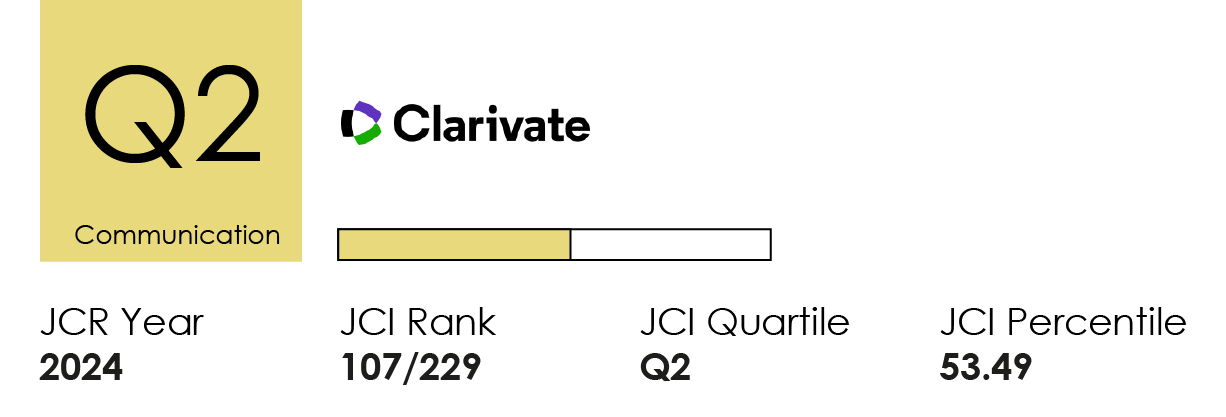Aproximación teórica al branding relacional: de las teorías de Fournier a las brand communities
DOI:
https://doi.org/10.14198/MEDCOM2015.6.1.08Palabras clave:
Branding, Branding relacional, Teorías de Fournier, Brand communitiesResumen
El entorno comunicativo actual está marcado por la existencia de múltiples redes de relaciones. La gestión de marca pone el acento en la consideración del individuo como ser relacional y se repiten ideas como “compromiso” o “conversación”. En este sentido, proliferan las propuestas teóricas que estudian la relación individuo-marca, si bien esta tendencia se extiende en los últimos años hacia la consideración de la relación individuo-marca-individuo. En este trabajo estudiamos desde un prisma teórico las perspectivas sobre branding relacional atendiendo a sus orígenes, desarrollo y consolidación. Asimismo, esbozamos los nuevos caminos que las marcas están explorando en su búsqueda de puntos de conexión emocionales con un nuevo consumidor con cada vez mayor deseo de participación.
Citas
AAKER, D. (2002). Construir Marcas Poderosas. Barcelona: Gestión 2000.
AAKER, J. (1997). Dimensions of Brand Personality. Journal of Marketing Research, n. 34 (August), pp. 347-356.
AAKER, J. y FOURNIER, S. (1995). A Brand as a Character, a Partner and a Person: Three
Perspectives on the Question of Brand Personality. Advances in Consumer Research, 22 (1), 391-395.
AAKER, J.; FOURNIER, S. y BRASEL, S. A. (2004). When Good Brands do Bad. Journal of Consumer
Research, 31, 1-16.
AGGARWAL, P. (2004). The Effects of Brand Relationship Norms on Consumer Attitudes and Behavior. Journal of Consumer Research, 31, 87-101.
ALGESHEIMER, R.; DHOLAKIA, U. M. y HERRMANN, A. (2005). The Social Influence of Brand Community: Evidence from European Car Clubs. Journal of Marketing. 69, 19-34.
ANDERSON, B. (1983). Imagined Communities. Reflections on the Origin and Spread of Nationalism. Londres: Verso.
BAGOZZI, R. P. y DHOLAKIA, U. M. (2006). Antecedents and Purchase Consequences of Customer Participation in Small Group Brand Communities. International Journal of Research in Marketing, 23, 45-61.
BASSAT, L. (2006). El Libro Rojo de las Marcas. Cómo Construir Marcas de Éxito. Barcelona: Random House Mondadori.
BENDER, T. (1978). Community and Social Change in America. New Brunswick, NJ: Rutgers University Press.
BERSCHEID, E. (1983). Emotion. En KELLEY, H. H. et al., Close Relationships (pp. 110-168). New York: W. H. Freeman.
BERSCHEID, E. y PEPLAU, L. A. (1983). The Emerging Science of Relationships. En KELLEY, H. H. et al., Close Relationships (pp. 1-19). New York: W. H. Freeman.
BITNER, M. J.; BOOMS, B. H. y TETREAULT, M. S. (1990). The Service Encounter: Diagnosing Favorable and Unfavorable Incidents. Journal of Marketing, 54 (1), 71-84.
BUBER, M. (1946). Essays in Religion. London: Oxford University Press.
CARLSON, B. D.; SUTER, T. A. y BROWN, T. J. (2008). Social versus psychological brand community: The role of psychological sense of brand community. Journal of Business Research, 61, 284-291.
CAUGHEY, J. L. (1984). Imaginary Social Worlds: a Cultural Approach. Lincoln: University of Nebraska Press.
CHEVALIER, M. y MAZZALOVO, G. (2005). Pro logo: por qué las marcas son buenas para usted. Barcelona: Belacqua de Ediciones y Publicaciones.
CRAINER, S. (1997). El verdadero poder de las marcas. Madrid: Eresma & Celeste.
DAVIS, M. (2006). Mucho más que un nombre. Una introducción a la gestión de marcas. Barcelona: Parragón.
DION, K. y DION, K. (1996). Cultural Perspectives on Romantic Love. Personal Relationships, 3, 5-17.
ESCALAS, J. E. (1996). Narrative Processing: Building Consumer Connections to Brands. Tesis Doctoral no publicada. Durham: Duke University.
FERNÁNDEZ, J. D. (2013). Principios de Estrategia Publicitaria y Gestión de Marcas. Nuevas Tendencias de Brand Management. Madrid: McGraw-Hill.
FOURNIER, S. (1991). A meaning-based framework for the study of consumer-objects relations. Advances in Consumer Research, 18(1), 736-742.
FOURNIER, S. (1998). Consumer and their brands: developing relationship theory in consumer
research. Journal of Consumer Research, 24(4), 343-373.
FOURNIER, S. y YAO, J. L. (1997). Reviving brand loyalty: A reconceptualization within the framework of consumer-brand relationships. International Journal of Research in Marketing, 14(5), 451-472.
FOURNIER, S. y LEE, L. (2009). Getting Brand Communities Right. Harvard Business Review, 87, 105-111.
GILLIGAN, C.; LYONS, N. y HAMMER, T. J. (1990). Making Connections. Cambridge, MA: Harvard University Press.
GILMORE, G. W. (1919). Animism. Boston: Marshall Jones.
GILMORE, J. H. y PINE, B. J. (2007). Authenticity. What Consumers Really Want. Boston: Harvard Business School Press.
GOBÉ, M. (2005). Branding emocional. El nuevo paradigma para conectar las marcas emocionalmente con las personas. Barelona: Divine Egg.
HEALEY, M. (2009). ¿Qué es el branding? Barcelona: Gustavo Gili.
HINDE, R. A. (1979). Towards Understanding Relationships. London: Academic Press.
HIRSCHMAN, E. (1994). Consumers and their Animal Companions. Journal of Consumer Research, 20, 245-256.
HOMS, R. (2004). La era de las marcas depredadoras. México: McGraw-Hill.
JACOBY, J. y CHESTNUT, R.W. (1978). Brand loyalty: Measurement and management. Chichester, New York: Wiley.
JOHNSON. M. P. (1973). Commitment: A Conceptual Structure and Empirical Application. Sociological Quarterly, 14, 395-406.
KAPFERER, J-N. (2012). The New Strategic Brand Management. Advanced Insights & Strategic Thinking. Philadelphia: Kogan Page.
KELLER, K. L. (2008). Branding. Administración Estratégica de Marca. México: Pearson Educación.
LEVY, S. J. (1985). Dreams, Fairy Tales, Animals and Cars. Psychology and Marketing, 2, 67-81.
McALEXANDER, J. H.; SCHOUTEN, J. W. y KOENIG, H. F. (2002). Building Brand Community. Journal of Marketing, 66, 38-54.
McCRACKEN, G. (1988). Culture and Consumption: A Theoreticall Account on the Structure and Movement of the Cultural Meaning of Consumer Goods. Journal of Consumer Research, 13, 71-84.
McCRACKEN, G. (1993). The value of the brand: An anthropological perspective. En AAKER, D. y BIEL, A. (Eds.), Brand Equity and Advertising (pp. 125-139). Hillsdale, New Jersey: Lawrence Erlbaum Associates.
McDOUGALL, W. (1911). Body in mind: A history and defense of animism. New York: Macmillan.
MUNIZ, A. M. y O'GUINN, T. C. (1995). Brand Community and the Sociology of Brands. Conferencia presentada en “Annual Conference of the Association for Consumer Research”, Minneapolis, MN.
MUNIZ, A. M. y O’GUINN, T. C. (2001). Brand community. Journal of Consumer Research, 27, 412-431.
NINDA, E. A. y SMALLEY, W. (1959). Introducing Animism. New York: Friendship.
OLSEN, B. (1993). Brand loyalty and lineage: Exploring new dimensions for research. En McALISTER, L. y ROTHSCHILD, M. (Eds.), Advances in Consumer Research, 20, 575-579. Association for Consumer Research, Provo, UT.
OLSEN, B. (1995). Brand Loyalty and Consumption Patterns. En SHERRY, J. F. (Ed.), Contemporary Marketing and Consumer Behavior: An Anthropological Sourcebook (pp. 245-281). Sage: Thousand Oaks.
PATTERSON, M. y O’MALLEY, L. (2006). Brands, Consumers and Relationships: a Review. Irish Marketing Review, 18 (1y2), 10-20.
PARKS, M. R. y EGGER. L. L. (1991). The Role of Social Context in the Dynamics of Personal Relationships. Advances in Personal Relationships, 2, 1-34.
PLUMMER, J. (1985). How Personality makes a Difference. Journal of Advertising Research, 24(6), 27-31.
ROBERTS, K. (2005). Lovemarks. El futuro más allá de las marcas. Barcelona: Empresa Activa.
SCHMITT, B. (2006). Experiential marketing. Cómo conseguir que los clientes identifiquen en su marca sensaciones, sentimientos... relaciones. Barcelona: Deusto.
SCHOUTEN, J. W. y McALEXANDER, J. H. (1995). Subcultures of consumption: An ethnography of the new bikers. Journal of Consumer Research, 22, 43–61.
SHERRY, J. (1987). Cereal Monogamy: Brand Loyalty as Secular Ritual in Consumer Culture. Conferencia presentada en “Annual Conference of Association of Consumer Research”, Boston.
SHETH, J. N. y PARVATIYAR, A. (1995). Relationship marketing in consumer markets: Antecedents and consequences. Journal of the Academy of Marketing Science, 23, pp. 255–271.
SOLOMON, M. R. (1986). Deep-seated materialism: The case of Levi's 501 jeans. En LUTZ, R. J. (Ed.), Advances in Consumer Research, 13, 619-622. Association for Consumer Research, Provo, UT.
SOLOMON, M. R. (1995). Status, Symbols, Impression Management, and Success. Conferencia presentada en “Annual Conference of the Association for Consumer Research”, Minneapolis, MN.
SOLOMON, M. R. y ASSEL, H. (1988). The Forest or the Trees? A Gestalt Approach to Symbolic Consumption. En UMIKER-SEBEOK, J. (Ed.), Marketing and Semiotics: New Directions in the Study of Signs for Sale (pp. 189-218). Berlin: Mouton de Gruyter.
STEEL, J. (2000). Verdades, mentiras y publicidad. El arte de la planificación de cuentas. Madrid: Eresma & Celeste.
STERN, B. B.; THOMPSON, C. J. y ARNOULD, E. J. (1998). Narrative Analysis of a Marketing Relationship: The Consumer Perspective. Psychology and Marketing, 15(3), 195-214.
STUEVE. C. A. y GERSON, K. (1977). Personal Relations across the Life Cycle. En FISCHER, C. S. (Ed.), Networks and Places: Social Relations in the Urban Setting (pp. 79-98). New York: Free Press.
TAJFEL, H. (1978). Differentiation Between Social Groups: Studies in the Social Psychology of Intergroup Relations. New York: Academic.
TAJFEL, H. y TURNER, J. (1979). An integrative theory of intergroup conflict. En AUSTIN, W.G. y WORCHEL, S., The Social Psychology of Intergroup Relations (pp. 33–48). Monterey, CA: BrooksCole.
TURNER, J. et al. (1987). Rediscovering the Social Group: A self-categorization Theory. New York: Blackwell.
TYLOR, E. (1874). Primitive culture: researches into the development of Mythology, Philosophy, Religion, Language, Art, and Customs. New York: Holt.
Descargas
Estadísticas
Publicado
Cómo citar
Número
Sección
Licencia
Derechos de autor 2015 Jorge David Fernández-Gómez, Maria Teresa Gordillo-Rodríguez

Esta obra está bajo una licencia internacional Creative Commons Atribución-CompartirIgual 4.0.
Los autores y autoras que publican en esta revista están de acuerdo con los siguientes términos:
1 Derechos de autor. Los autores y autoras conservan sus derechos de autor, aunque ceden a la revista de forma no exclusiva los derechos de explotación (reproducción, distribución, comunicación pública y transformación) y garantizan a esta el derecho de primera publicación de su trabajo, el cual estará simultáneamente sujeto a la licencia indicada en punto 2. Los autores pueden establecer otros acuerdos adicionales para la distribución no exclusiva de la versión de la obra publicada en la revista, siempre que exista un reconocimiento de su publicación inicial en esta revista.
© Los autores.
2 Licencia. Los trabajos se publican en la revista sujetos a la licencia de Reconocimiento 4.0 Internacional de Creative Commons (CC BY 4.0); los términos se pueden consultar en https://creativecommons.org/licenses/by/4.0/
Esta licencia permite a terceros compartir (copiar y redistribuir el material en cualquier medio o formato) y adaptar (remezclar, transformar y crear a partir del material para cualquier finalidad, incluso comercial), siempre que se reconozca la autoría y la primera publicación en esta revista (Revista Mediterránea de Comunicación (RMC) / Mediterranean Journal of Communication (MJC), Universidad de Alicante, DOI de la obra), se proporcione un enlace a la licencia y se indique si se han realizado cambios en la obra.
3 Política de autoarchivo. Se recomienda a los autores que difundan sus trabajos a través de Internet para favorecer una circulación y difusión más rápidas y, con ello, un posible aumento en la citación y alcance entre la comunidad científica y académica, en las siguientes condiciones:
No se permite a los autores depositar en un repositorio institucional o temático, página web propia, etc., las versiones preprint (versión antes de ser evaluada) o postprint (versión evaluada y aceptada para su publicación) de sus trabajos antes de su publicación, pero sí el artículo final publicado (versión del editor).













